
Best of 2025 LearnOps Webinars
A curated, on-demand path for L&D and Talent leaders to modernize budgets, operations, and strategy using LearnOps. This webinar collection brings together leading CLOs, industry

Agile Learning, or Agile instructional design, refers to any approach to training development that focuses on speed, flexibility, and collaboration.
Agile is a term usually associated with software development. But as the speed of business increases, other business functions have adopted agile techniques to help them pivot quickly with market changes. L&D leaders observed that the process of developing learning experiences in today’s digital age could greatly benefit from the agile methodology. As such, Agile Learning was born.
Agile also embraces speed. As L&D leaders are continually challenged with rolling out training that is highly complex, the ability to rapidly develop and distribute a large volume of learning content is paramount.
As L&D teams seek to respond more quickly to organizational needs from a training perspective, Agile Learning provides the “failing fast,” iterative mentality that enhances speed without compromising on quality.
Agile learning is the application of Agile philosophies to the learning design process.
It involves moving incrementally through an iterative design process. Agile teams alternate between learning phases and doing phases. The “doing” phases are referred to as “Sprints.”
Agile Learning also incorporates the use of Scrum. This is a method of team management during a project where daily scrums (concise meetings) provide quick, high-level updates on progress and learning. Scrums are not for discussions or problem-solving. These activities should happen separately, with only the people needed for each discussion.
Agile Learning focuses on speed, flexibility, and collaboration. So corporate training teams can move quickly through sprints and achieve their targets and goals.
Some of the key concepts that influence the philosophy of Agile Learning include:
While Agile Learning refers to the process of developing training experiences, learning agility refers to characteristics held by individual learners.
Learning agility is the ability held by an individual to adapt to unfamiliar situations, learn quickly, and in a mostly self-managed way. People who are high on the learning agility scale are top performers during times of uncertainty. They can self-direct, and are okay with the discomfort of unfamiliarity.
People with high levels of learning agility can approach unfamiliar situations by quickly connecting past experiences with present problems to make sense of them and find solutions.
Dr. W. Warner Burke of Columbia University has broken down learning agility into nine dimensions:
Between terminology, timelines, and methodology, a lot of research and planning goes into adopting Agile Learning. So it’s easy to feel overwhelmed when you’re getting started with Agile.
The good news is, you don’t need to be an expert. Just like the core principles of Agile itself, iteration is critical. Don’t be afraid to switch things up and experiment until you get your Agile Learning processes just right.

While the principles of Agile remain the same, it is often applied quite differently across business functions and organizations. So while you might have read up on the core ideas of Agile and have an idea of how it should look, take the time to research specific case studies of how other learning and development teams have used the methodology. You might pick up some useful tips or perspectives that hadn’t occurred to you during your initial research.
It’s also a good idea to speak with any other teams within your organization who have already adopted an Agile framework. Your IT/Engineering team would be an excellent place to start. If a team within the organization has already adopted it successfully, they might be able to provide tips or frameworks specific to your organization. So, you’ll have a jumpstart on what will work for your organizational culture.
Carefully select an upcoming project. And if you have a hand in choosing the team to work on the project, so much the better. Try to select a project that is already likely to be highly successful but is not of critical importance at this stage.
However, there should also be a motivated sponsor who will help to drive the project forward and champion the new Scrum methodology.
Don’t choose a project that is already underway, is complex, or has already experienced challenges. At this first experimental stage, you want to set up your Agile Learning team for success and figure out what works for your internal culture.
Starting with a microlearning project is a useful place to begin. The projects are shorter by nature, so they will be easy to slot into your selected Sprint schedule.
The last thing you need for your first foray into Agile Learning is an unwilling team. So, for your first Agile Learning team, choose people who are:
Don’t forget that you’ll be assigning specific Agile roles to different project team members, too. As you scale your Agile Learning efforts, more team roles may need to be included, especially for more complex projects. But these quick tips will help you get your first Agile team up and running and help you decide who should take each role:
Getting started with Agile Learning makes an experimental period and a few test projects necessary to see what works for you and your teams. So it’s vital that you monitor progress closely and document challenges, wins, bottlenecks, and efficiencies along the way.
With each project, you’ll be smoothing out the creases in your Agile Learning design methods and getting closer to the productivity levels you need.
Moreover, you should be involved in the projects as the champion of Agile Learning to offer support, guidance, and perspective to project sponsors, SMEs, and anyone else involved.
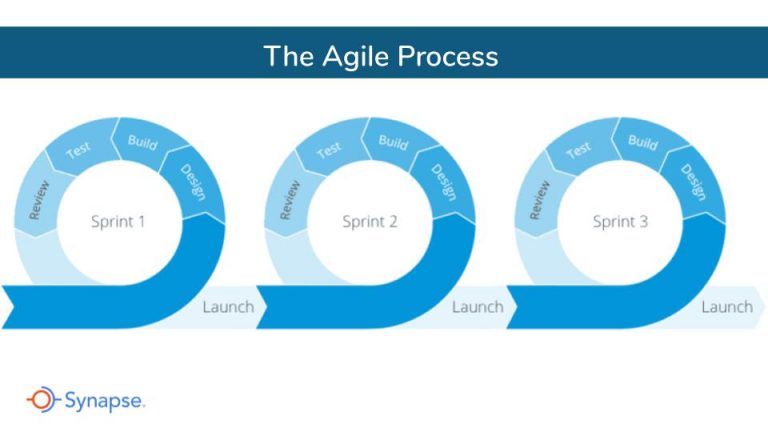
While there are lots of Agile-focused project management tools and software available, piling onto your tech stack should not be your number one priority at these early stages.
As you scale Agile Learning across all learning projects, it will most likely become necessary to find technology to help you streamline processes and maintain better oversight. But for now, your priority should be getting the roles and processes right on a couple of experimental projects.
Establishing a productive Agile Learning team and running a successful Sprint is the primary goal.
The “Backlog” is a fundamental tool for prioritizing your team’s workload and listing out everything (and we mean everything) that needs to be done to develop a single course or learning experience.
The Product Owner is the owner and gatekeeper of this list. So it’s their job to assemble, prioritize, and update the Backlog.
The Backlog is not the same as a “to do” list in that it will never be “complete.” As the project develops and needs fluctuate, the Backlog should be continuously updated, and new items added.
Also, the Backlog should be detailed. Don’t be afraid to get into the nitty-gritty details and break down items into step by step tasks.
A “Sprint” is part of the Agile philosophy. It’s a set period, during which the Agile Learning team aims to complete a set amount of tasks to create and improve the end product.
Choose a timeframe
You must decide on a specific timeframe from your Sprints. This timeline varies from organization to organization and even from team to team. But they are never longer than one month.
As you develop Agile Learning processes, you may decide to change up your Sprint durations according to what works best for your team and your course design.
Pick your items
While planning your first Sprint, pick items from your Backlog that the team is aiming to complete during this specific Sprint.
The team should choose tasks that are highest in priority level and then decide who will be responsible for their completion.
The Daily Stand-Up
The Daily Stand-Up is an essential feature of Agile Learning that helps keep the team as a whole on track. The idea is to literally “stand up” together once a day for no longer than 15 minutes. It should happen once a day and preferably at the same time every day.
During the Stand-Up, each person of the Agile Learning team should give a quick update about:
The Daily Stand-Up is not for discussion, debate, or decisions. If an item needs further exploration, separate meetings should take place with those on the team for whom the task/issue is relevant.
The Retrospective
After each Sprint, allocate a set amount of time for reflecting on the finished work, the processes used, and the finished product.
The whole team presents their work to each other and discusses how to improve processes for the next Sprint.
People who are unfamiliar with Agile and Scrum methodology are often suspicious of taking on such a drastically different way of working. So it can take some work on your part to educate them on the benefits of Agile Learning.
Consider booking some in-depth Scrum training for you and your team with an external expert. It’s a great way to get everyone on board and familiar with the basic methodology and terminology.
View this on-demand webinar recording to learn how to leverage Agile for your unique organizational and learning needs. Mark Hellinger draws on his extensive and unique experience in the learning and technology industries to show you what’s driving digital transformation, how to use Agile in conjunction with existing models to speed up digital transformation, and the tools and processes of Agile that can be implemented quickly, even for remote teams.

The digital age is speeding the world up at an unprecedented pace. We’re more interconnected and interdependent than we have ever been before across all aspects of society, daily life – and business.
With faster changes comes the need for more rapid responses. Marketing teams, sales reps, software engineers, and operations are all learning to adapt quickly to business changes and respond to volatile market forces. And now, learning and development can keep up with the training needs this environment creates by adopting Agile Learning solutions.
Agile Learning solutions incorporate several methodologies, best practices, and team structures. It enables your L&D department to keep up with the demand for training by allowing:
Collaborating with subject matter experts (SMEs) is a common pain point for instructional designers. Learning teams and SMEs can often clash heads on priorities, decision making, timelines, and project leadership.
Agile Learning helps to alleviate this friction in several ways:
It’s deeply frustrating to spend weeks or months building a learning experience only to achieve minimal engagement rates and mediocre feedback from learners. And it’s not L&D’s fault that this happens.
Traditional instructional design models leave very little room for learner involvement or input into the design process. So, if they only see the product once it’s complete, it’s not surprising that a disconnect can happen between what you have created and what the learners would prefer.
With Agile Learning, continuous learner testing of your course design is a core part of the process. It helps your learning team to iterate much more quickly on course design and ensures that the customer’s needs and wants shape the Agile Learning team’s activities at all times.
The result is courses that are built for the user, increasing engagement rates among your learners, and more positive feedback on your course design.
And even if you don’t quite hit the mark on the initial release, the iterative nature of Agile Learning makes it easy to quickly take another run at what you missed the first time around.
Under current processes and typical training project management approaches, L&D can struggle to pivot quickly enough with unforeseen changes. Resource needs can be unpredictable, and change becomes costly.
But Agile Learning solutions means predictable costs and timelines. Every Sprint you undertake is a fixed duration. So, the cost is known and predictable from the outset. Plus, the many iterations that take place with Agile Learning mean it will quickly become easier to estimate the cost of training projects and features.
While Agile Learning has become a popular term amongst learning professionals, the step-by-step process of how it looks in practice isn’t always clear.
That’s because there isn’t a singularly defined approach to Agile learning design processes. Instead, several leaders in instructional design have created models and methodologies that encapsulate the fundamental philosophy of the Agile Manifesto and apply it to instructional design.

The Successive Approximation Model, developed by Allen Interactions, provides an agile version of traditional models like ADDIE. It emphasizes repetition, collaboration, and efficiency to help overcome common pain points for training teams.
This more basic version of the two models is ideal for smaller courses or quick course updates. The process incorporates steps that you’re already familiar with but organizes the cycle of your work more iteratively.
SAM1 provides all members of the team with the opportunity to share ideas, discuss assumptions, and conduct early prototype testing to get more feedback and get to the end product quicker.
However, we all know that this approach is a little simplistic for some of the more significant training projects that come along. But, for those more complicated situations, SAM2 rises to the occasion.
With SAM2, there are eight steps across three phases of the project. The steps retain the iterative flavour of SAM1 while providing more structure around the overall project. When working with SMEs and other stakeholders, SAM2 helps you keep things organized while maintaining effective collaboration methods, rapid design, and continuous refinement of the product.
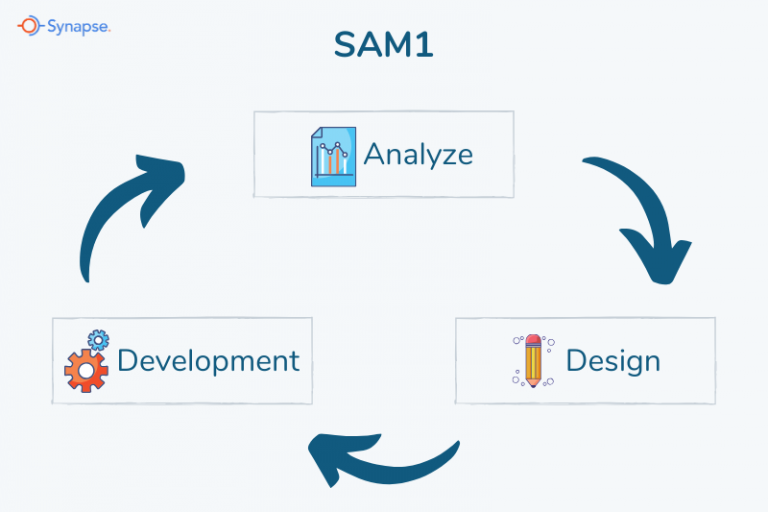
Also known as rapid e-learning, this model consists of a preparation phase, iterative design, reusable templates, and tools to support quick execution.
There are some generally accepted characteristics of Rapid Content Development, including:
Rapid e-learning is becoming a hugely popular method with L&D teams who need a “just-in-time” approach to learning design, who rely heavily on SMEs to create content, and who need to standardize course design in the organization.
While it seems like the answer to all your learning design problems, it has been argued that this approach is too simplistic for more complex course design.
AGILE is an instructional design model that incorporates many characteristics of the Agile Manifesto and applies them directly to the instructional design process.
Unlike Agile Learning, AGILE is an acronym for a step-by-step process designed by Conrad Gottfredson, a learning strategist, and industry leader. The five steps of the AGILE instructional design model are:
Megan Torrance developed this approach in her learning solutions company, TorranceLearning. Like all Agile methodologies, LLAMA focuses on quick iterations to increase speed to market and quality of the end product.
Agile project management is a core focus of LLAMA. So, it’s not just about your course design process; it’s about managing all the other aspects of your training project, from requirements gathering to collaboration with SMEs.
What started out as a framework for software development has quickly taken the entire business world by storm. But it seems that there is one Agile misconception after another out there, and they’re making teams reluctant to try this new framework.

A common misconception about Agile is that it does not require a formulated plan or structured process. And while Agile promotes flexibility and the ability to respond quickly to a changing goal, there are structures and processes in the framework that help the whole Agile team to stay on track.
For example, the use of Sprints ensures the project maintains momentum and accountability is shared amongst the team. A Sprint is a short cycle within the project. It usually at least one week in duration but no longer than three weeks. Different tasks from a backlog are tackled in each Sprint, and progress is reviewed at the end.
The idea is to keep iterating and improving throughout the project. And these iterations allow the team to achieve an MVP (Minimum Viable Product) much quicker than more traditional approaches. So, while Agile promotes flexibility, there is a lot more to Agile than simply going with the flow.
Another common Agile misconception is that there is no team structure or project managers. While the team structure is a core part of Agile success, there are still “Project managers” amongst Agile roles. It’s their job it is to keep everything on track.
Every person on an Agile team has a clearly defined role and responsibilities. This helps keeps everyone accountable and driving forward.
The Scrum Master is the role most closely associated with a traditional project manager. They focus on fine-tuning processes, providing feedback, maintaining cohesion, and mentoring other members of the team. Although a flat team structure is an essential concept in Agile, the Scrum Master oversees day-to-day operations. They manage the Scrum Board and ensure everyone stays on target.
The main reason Agile doesn’t work is that it’s not implemented properly or the team gives up too soon without trying to adjust and fully committing. The Agile misconception that it’s a philosophy that simply doesn’t work usually has its roots in poor implementation.
While Agile is certainly not a one-size-fits-all answer, if your team has tried and failed to implement it in the past, you might try bringing in some external consultants to help you find the right way to fit Agile into your team.
The need to keep up with increasingly dynamic market forces means organizations must find ways to kickstart a higher pace and keep up with change. That’s why practices such as Agile have been seeping into multiple business functions in recent years.
Agile was developed for software engineering teams as a way to respond more quickly to customer needs, market forces, changing project goals, and a generally more sensitive and volatile market. It enabled software teams to quickly bring products to market and respond to customer feedback due to shorter Sprint cycles.
It’s not difficult to see why the same principles are appealing when applied to other business functions such as learning and development.
Agile is not necessarily better than all other frameworks, depending on the project and the team’s goals and objectives. It’s also not the case that it cannot work in tandem with other more traditional models. But it’s a common Agile misconception that you must fully embrace Agile to the detriment of all other frameworks, models, and processes.
Organizations that embrace a culture of Agile Learning on both sides of the fence are more responsive to change. They perform better and experience a higher level of synergy between learning design and business performance.
Here are some steps you can take to create an Agile Learning culture in your learning department:
A great way to adopt an Agile Learning culture is to speak with other teams who are already doing it. For example, your IT/Engineering team would be an excellent place to start.
If a team within the organization has already adopted it successfully, they will be able to provide tips or frameworks that are both broad enough to be used outside of their department yet specific enough that they can only be used within your organization.
Agile Learning methodologies are derived from those used in the software industry. So there is no shortage of online courses available to bring your team up to speed on Agile.
Small investments in external courses could make sense for you and your team when adopting agile for learning projects internally.
You obviously want to know whether Agile works well. The fact that you built a course quickly and under budget matters little if the course proved ineffective.
If you can show your team the time and resources being saved and the increased benefit to learners, their resistance to an Agile Learning framework for course design will quickly thaw.

But what about an Agile Learning culture in the wider organization? It’s important to provide your organization with the tools they need to remain flexible and responsive to market changes.
On the L&D side, this means rapid course creation and changing the way training projects are managed. On the learner side, it involves fostering a culture of continuous and responsive learning. So, how can you do that?
Learning agility refers to characteristics held by individual learners. Learning agility is the ability to adapt to unfamiliar situations, learn quickly, and in a mostly self-managed way.
Recognizing these learning agility skills not only in your team but also in your subject matter experts can go a long way towards adopting Agile. Those with learning agility can help people anticipate the twists and turns. They can serve as guides to ease other team members into Agile by preparing folks for sprints and rapid turnarounds.
Aside from the fact that learners actually want to learn independently, promoting continuous, independent learning goes a long way towards helping employees to learn on the fly.
Many companies are creating and promoting “just in time” learning in their organizations to help learners access the training they need at the moment they need it. This type of rapid response training is at the core of Agile Learning cultures.
Creating online learning experiences that are accessible through multiple devices encourages learners to engage. Mobile learning, or meeting learners where they are, enables the type of responsiveness that is characteristic of an Agile Learning culture.
While your courses may be highly accessible through mobile learning, it’s also a good idea to break down courses into microlearning wherever possible. The benefits of microlearning as it pertains to an Agile Learning culture are:
Just like you need to show the benefits of Agile to your L&D team to get them on board, the same is true for your learners. In order to encourage an Agile Learning culture, they need to understand the realtime benefits of continuous, responsive learning.
That’s where a synergy between the learning team and employees comes into play that can catapult the success of your Agile Learning culture implementation.
As training teams begin to adopt Agile Learning methodologies, growing pains are inevitable. Agile Learning hurdles are just another part of the implementation process that must be addressed.
Transitioning to a new format can be difficult for any professional, and not just those in learning and development. You’ll have to consider your subject matter experts’ role in new Agile Learning training projects as well as your training team.
Let’s have a look at some common hurdles teams encounter when incorporating Agile into their course development. Most of these revolve around employees’ possible resistance to certain procedures required for Agile. However, with some anticipation and troubleshooting, successful deployments using Agile are possible.

A crucial part of the Agile process, sprints require the rapid completion of assigned tasks, usually within 1-2 weeks.
Of course, employees often work with deadlines already. However, the rather quick turnaround can alienate many employees, especially when these sprints occur in succession.
This will require some adjustment on the part of employees. Demonstrate to each employee the impact of his or her contribution. Explain how if he or she did not complete the task within the sprint, then the project would fall behind schedule. This is not meant to threaten, but rather to encourage employees.
In fact, learning about the impact of their work on the big picture in such a short time frame may motivate training project participants.
Weekly meetings and conference calls may be the norm in most organizations.
But giving a daily report of the previous day’s completed tasks? Not so much.
Daily Standups are another necessary component of Agile. In this process, each team member must—and sometimes literally—stand up and explain to the rest of the team what he or she worked on the previous day. This process brings transparency and a sense of accomplishment.
Some may not feel comfortable doing this. They may feel that it breeds gamesmanship, or a way for the manager to pit one team member against another. However, this is not the case. Explain that it is simply a way to create stronger communication and openness amongst team members. Further, questions and discussion are encouraged.
orking with Kanban-style project management boards might also be something new for employees involved in a learning project.
As a single view of all ongoing projects, organized in lists and with team members assigned to each task, it can often seem overwhelming for people. Some may also question the necessity of displaying all of the tasks, especially for parts of the project which do not involve that employee.
It’s important to explain that this complete view is intended to help keep the project stay on track—not to shame anyone. Demonstrate how everyone can learn from others and that the total view contributes to a successful outcome using Agile.
Change is hard, and employees may balk at having to implement a new process. If it ain’t broke, don’t fix it, they think. Why should they have to re-learn a way of producing learning content when the old way was perfectly fine?
This is a big hurdle, admittedly. This is where the shrewd L&D leader must demonstrate the benefits of Agile to naysayers and newcomers.
It might be helpful to demonstrate the expected outcomes of implementing Agile, and how these methodologies will improve the team’s output.
Another hurdle may be technology-related: some teams may think that they do not have the tools to carry out Agile Learning.
However, this is unfounded. Every project management tool has a way to implement Agile, including creating Kanban boards and assigning tasks with due dates, reminders, and labels.
Again, while the tools might not be new, the process will be. While some employees may be somewhat familiar with the basic features of a project management suite, they may be surprised to learn of others and how they are used.
This final hurdle isn’t about convincing team members to embrace Agile. Rather, this is one about addressing fears that courses built with Agile methodologies—especially because they are known to be built rather quickly—are of lower quality and thus, won’t be as valuable.
While quality can vary regardless of which development methodology is utilized, this is yet another opportunity for L&D to inform learners about the process or fundamentals on which the course was built.
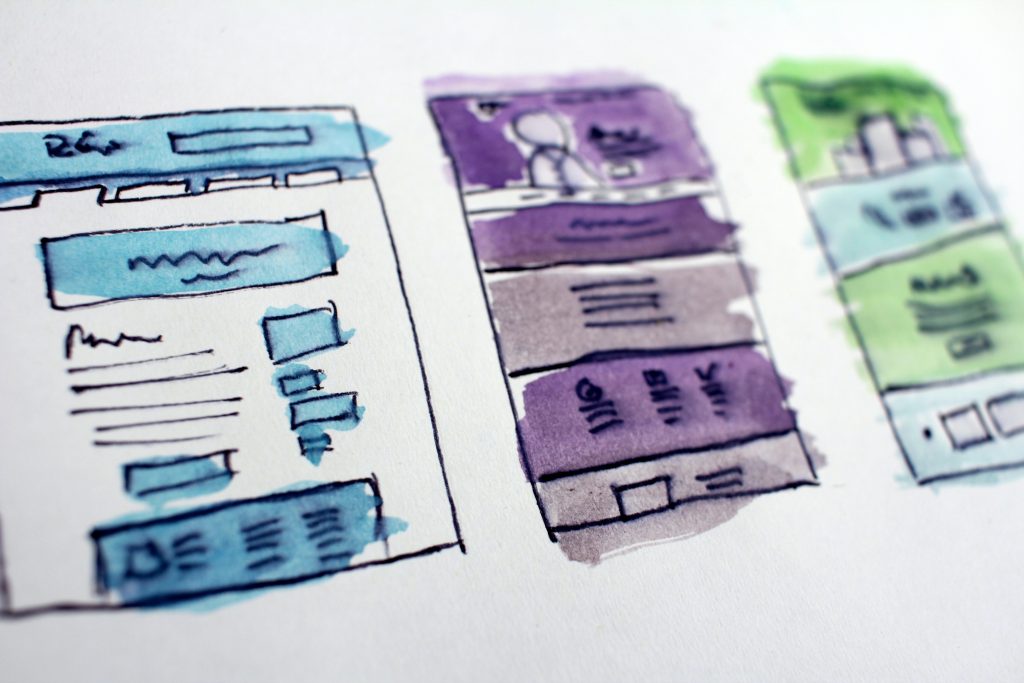
Agile Learning is on the rise. And with so many learning teams striving to effectively implement the processes and methodologies behind Agile, technology can help to bridge the gap.
Agile is used in lots of different ways by training teams across different organizations and project types. So when it comes to implementing new Agile Learning tools or software, flexibility is key.
Jira is one of the most widely recognized software geared towards Agile project management. It was created specifically for Agile solutions. It’s a great option for an “all in one” Agile Learning software, allowing you to manage projects through Scrum, Kanban, or your own unique Agile solution.


Asana is an Agile project management software that is highly customizable. You can mold the software to your own specific Agile needs. This means you can streamline training project management with Agile, but also incorporate work that may not follow Agile processes.
90,000 teams around the world use Monday.com. It is suitable for any method of working, including Agile, due to its high level of customization. One major benefit of Monday.com for training teams is its focus on cross-functional team work. So you can work with subject matter experts and other stakeholders over training projects easily.


One of the most widely used Agile methods is Kanban. If you’re ready to migrate your Kanban board from post-its on the wall of your meeting room to an easily managed online method, Trello is a great option.
From Backlog lists to “In Progress” and managing specific tasks in a Sprint, Trello has a wide range of functionality to ease the burden of managing your Kanban board. Plus, it’s completely flexible in how you set up different boards, lists, and cards.
When it comes to Sprint management, ActivCollab helps you keep track of deadlines by organizing tasks based on timelines with a Kanban-style board. For external learning content developers, ActivCollab also incorporates easy tracking of billable hours across all projects, creating invoices from your tracked time, and sending them directly to clients from ActiveCollab.


If you’ve settled on Scrum as the guiding light of your Agile processes, it makes sense to choose a software specifically built for that particular methodology. Axosoft was designed for Scrum and allows you to manage everything from course planning right through to deployment.
Reetro is an online Agile Retrospective tool to help you plan, manage and execute retrospectives. It’s particularly useful for remote teams and is fully customizable while also providing helpful templates. Retrospective boards can be public or private and you can invite team members to join. Cards can be anonymous so your Agile team members can feel comfortable submitting opinions, both positive and negative, that will enhance your next Sprint.
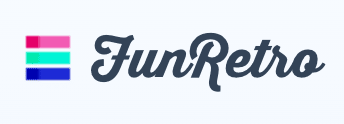
Fun Retro is another free Retrospective tool, but with fun colours and an engaging interface. The tool provides a basic template that allows you to add more columns or change the column names. Participants in the retrospective can “like” cards submitted to provide extra support to comments submitted during the Retrospective.
Digital transformation is the integration of digital technology into all areas of a business, fundamentally changing how you operate and deliver value to customers. It’s also a cultural change that requires organizations to continually challenge the status quo, experiment, and get comfortable with failure.
For Learning and Development teams, much of the efforts towards digital transformation revolve around moving traditional classroom-based training online, and finding more efficient digital methods for knowledge capture.
“There is no alternative to digital transformation. Visionary companies will carve out new strategic options for themselves — those that don’t adapt, will fail.”
– Jeff Bezos
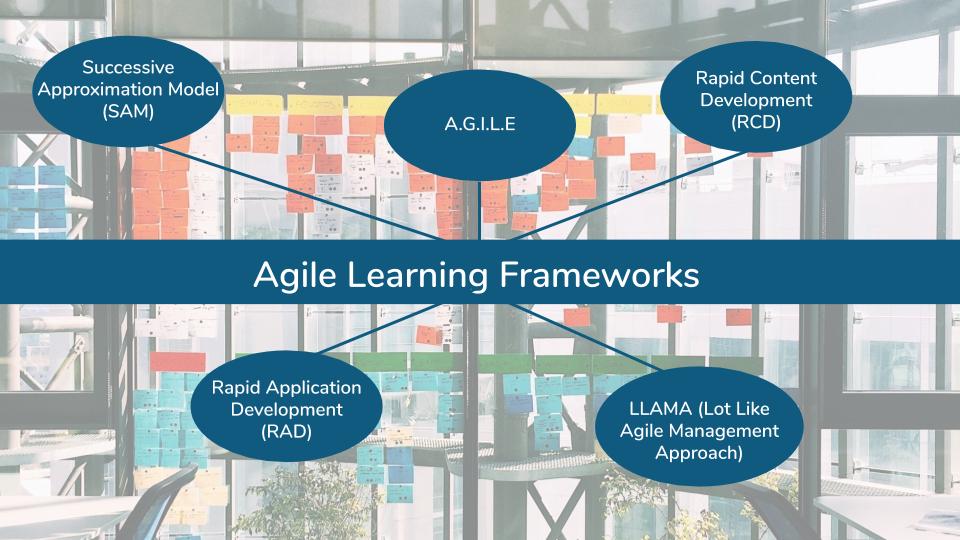
Agile Learning can help your training team to quickly implement digital transformation in incremental, iterative steps.
By breaking down an overwhelming digital transformation project into smaller chunks, you can achieve faster results and longterm success rather than overcommitting to a lengthy transformation plan without testing assumptions, tools, and processes along the way.
Agile was originally developed for software teams. As it has moved out across other business functions, it is constantly being adapted and moulded to suit the needs of individual teams.
The same approach should be taken for your learning team. Carefully research Agile methodologies and processes before incorporating those that suit your organization and your team.
But don’t be put off by the prospect of a culture overhaul in order to achieve Agile Learning implementation and digital transformation – the results are well worth the effort.
Synapse software lets you manage and prioritize training requests, standardize course design, and
collaborate more effectively with subject matter experts, so you can work more efficiently.
Resources for L&D Professionals

A curated, on-demand path for L&D and Talent leaders to modernize budgets, operations, and strategy using LearnOps. This webinar collection brings together leading CLOs, industry

Enterprise L&D teams manage hundreds of training requests, dozens of active projects, and limited team capacity. Without clear analytics, you’re flying blind. The problem isn’t

Talent and Learning and Development managers at enterprise organizations deal with real operational pressure. Most L&D teams handle more requests than they can take on,

A curated, on-demand path for L&D and Talent leaders to modernize budgets, operations, and strategy using LearnOps. This webinar collection brings together leading CLOs, industry

Enterprise L&D teams manage hundreds of training requests, dozens of active projects, and limited team capacity. Without clear analytics, you’re flying blind. The problem isn’t

A curated, on-demand path for L&D and Talent leaders to modernize budgets, operations, and strategy using LearnOps. This webinar collection brings together leading CLOs, industry
| Cookie | Duration | Description |
|---|---|---|
| cookielawinfo-checbox-analytics | 11 months | This cookie is set by GDPR Cookie Consent plugin. The cookie is used to store the user consent for the cookies in the category "Analytics". |
| cookielawinfo-checbox-functional | 11 months | The cookie is set by GDPR cookie consent to record the user consent for the cookies in the category "Functional". |
| cookielawinfo-checbox-others | 11 months | This cookie is set by GDPR Cookie Consent plugin. The cookie is used to store the user consent for the cookies in the category "Other. |
| cookielawinfo-checkbox-necessary | 11 months | This cookie is set by GDPR Cookie Consent plugin. The cookies is used to store the user consent for the cookies in the category "Necessary". |
| cookielawinfo-checkbox-performance | 11 months | This cookie is set by GDPR Cookie Consent plugin. The cookie is used to store the user consent for the cookies in the category "Performance". |
| viewed_cookie_policy | 11 months | The cookie is set by the GDPR Cookie Consent plugin and is used to store whether or not user has consented to the use of cookies. It does not store any personal data. |